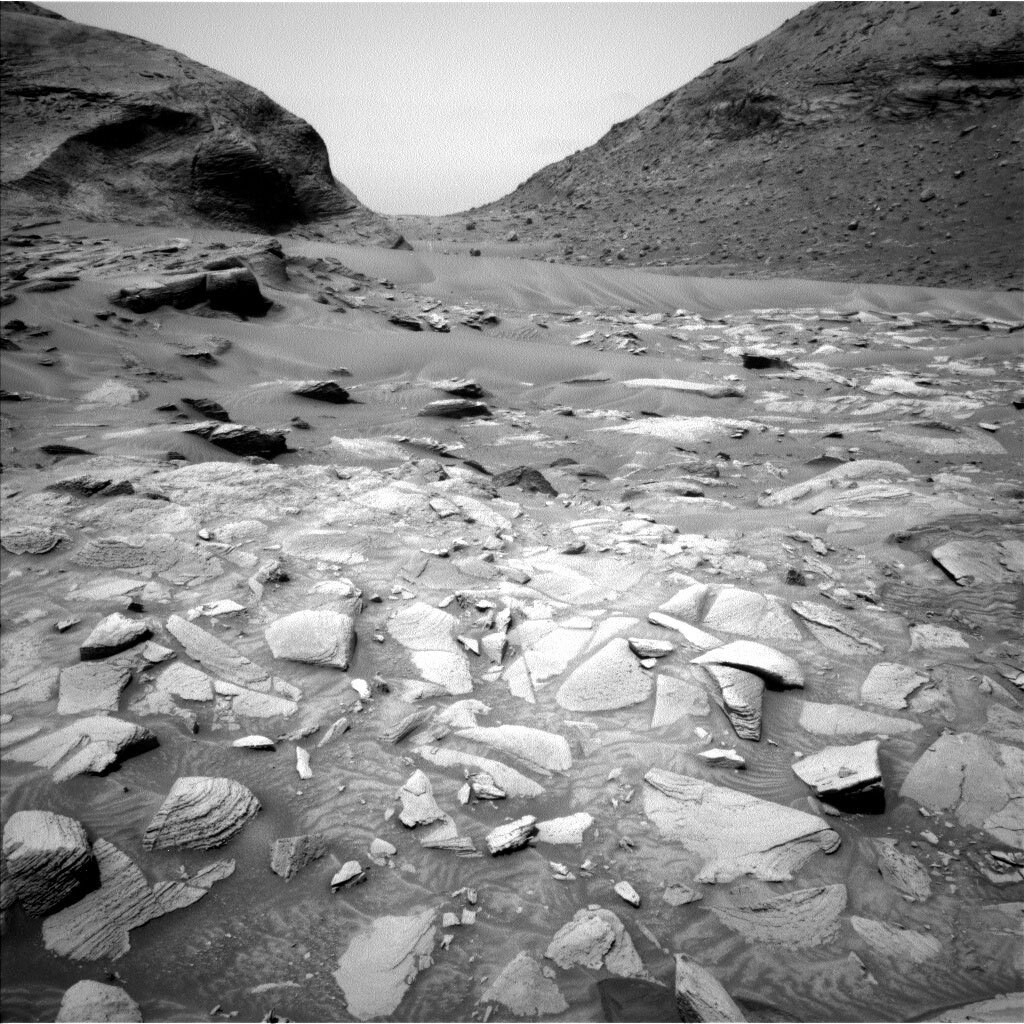3 min read

Whenever working on Mars throws up a complication, Curiosity’s team has to make a pivot. As the past couple bloggers have mentioned, we’ve been in a bit of a precarious spot, and can’t do any direct contact science or drill. The small drive in the last plan didn’t quite get us where we wanted to go, so we’re still not able to drill.
The team quickly pivoted into other science looking at some nearby and more distant targets. On the first sol of the plan, ChemCam is going to do LIBS on a nearby block, ‘Sophia Point,’ along with Mastcam. Mastcam and ChemCam are also continuing to document the distant marker band. Later in the sol MAHLI is getting up close with two bedrock targets – ‘Esperito Santo’ and the dusty ‘El Pao de la Fortuna.’
The next sol has a ChemCam LIBS on ‘Juventina’, which we possible scuffed while driving, followed up by Mastcam. ChemCam and Mastcam are also imaging the slightly more distant ‘Kabrito Island,’ a dark, nodular block. After all this we’re going to do a small bump to try to get into a location where we can hopefully drill and do contact science, and finishing up the sol with a MARDI twilight image.
Even through changes to the plan, the environment is always there around us to check up on. We’re still well in the dusty season in Gale, and ENV is keeping an eye on the changing atmosphere. One of these observations is called a tau, which is a measurement of optical depth, or how “thick” the atmosphere is with aerosols such as dust. Another way we look at the amount of “stuff” in the atmosphere is with the line of sight, which shows us how far we see towards the crater rim. Unfortunately, our view of it can get obscured by the big hills we’ve been driving through. Luckily for us, there’s a small gap between two hills where we can see a sliver of crater rim!
We also have two dust devil observations: a survey and a movie. The survey looks all the way around the rover to see where we might spot dust devils, which can help us decide where to point for the movie. Rounding out the environmental observations is a suprahorizon cloud movie. Even though it’s not the cloudy season, we still like to keep an eye on the sky for occasional clouds drifting past. An APXS atmospheric is also planned, to look at seasonal argon changes.
Written by Alex Innanen, Atmospheric Scientist at York University







